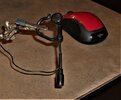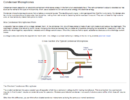I use a dollar twenty five cent headset microphone for recording purposes on my computer. I have made the assumption that an auxiliary source of current is needed to travel thru the mic to supply the varying converted audio waves to analog signal driving the amplifier inputs or maybe the power out amp pre-amp. Anyway, if you can toss me a current value for a starting point and how it is coupled to mic and amplifier circuits I'll try it out. I suppose I can interrupt the existing mic to computer plug and panel jack but...... My amplifier max gain is 200. Amp device ratings suggest Wout/max = 3 watts. Nominal amp Vs = +12 VDC ( Vs range is +8 to +15 VDC.) Nominal speaker Z = 8 ohms.
-
Categories
-
Platforms
-
Content



